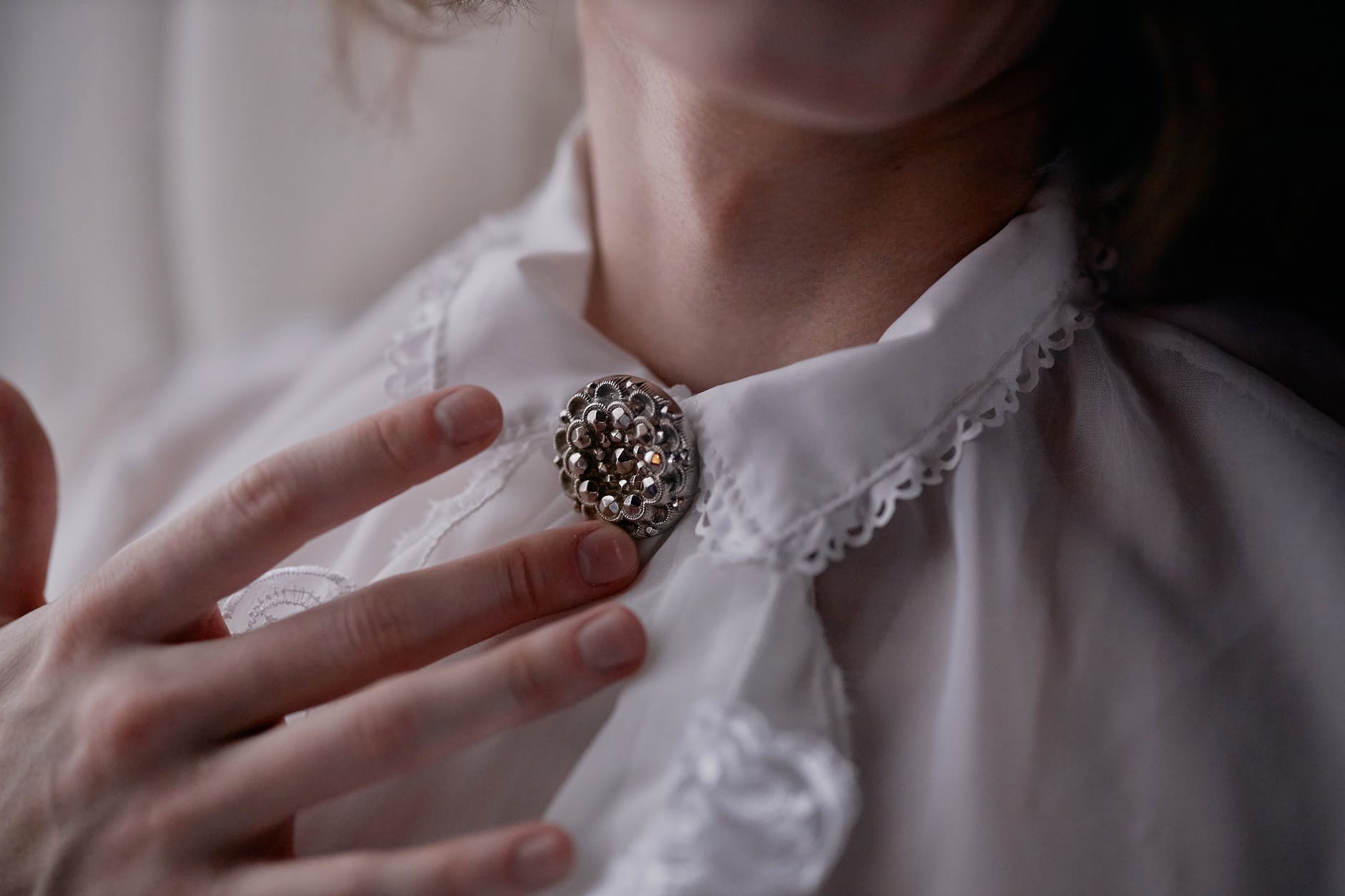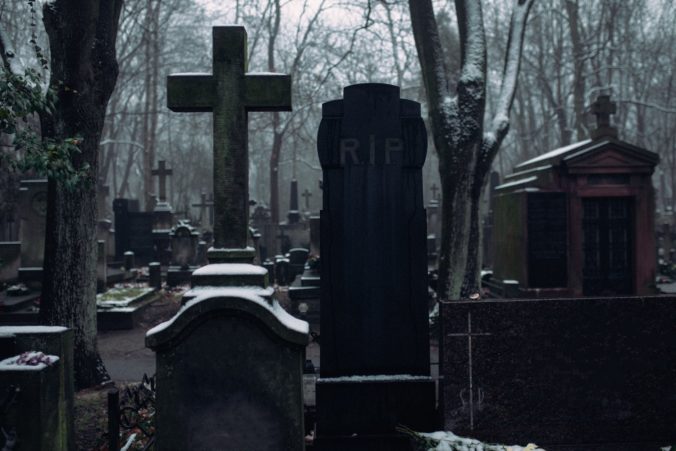Author Kevin Rush reflects on a favorite book of his adolescence
After my rant on another space against what Halloween has become, I thought I’d revisit what Halloween once was. A kid’s day of campy fright and copious candy? Of course, there was that, but there was also a sense of horror, closer to its original meaning. The word has Latin roots, stemming from the verb “to bristle,” as in hair standing on end, due to dread—and get this—veneration and religious awe. This is what separates classic horror from conventional slasher films. Horror is not just the fear of temporal harm or torment. It’s the dread of a supernatural force that attacks us on the spiritual level.
For me, nothing I’ve ever seen or read captures that definition so completely as Bram Stoker’s celebrated horror novel, Dracula. The horror Stoker depicts isn’t simply creepy or scary, it’s cosmically consequential. Deranged murderers wielding machetes or chainsaws are frightening, but they cannot touch their victims beyond the grave. Mourners can bury them believing they’ll rest in peace. But Stoker’s novel is horrifying, because he threatens the notion of eternal rest. Stoker creates a world of perverse religious veneration, where the Count is a false god, collecting souls as well as strewing corpses. Dracula is whom Jesus warned us to fear in Matthew 10:28: “…do not fear those who kill the body, but are unable to kill the soul; but rather fear Him who is able to destroy both soul and body in hell.”

I first read Dracula the summer after sixth grade. I was proud of myself for tackling such a huge book and the elevated language of Victorian England. It was corny for sure, but the melodrama was seductive. I also loved the form; Dracula is an epistolary novel whose story unfolds through diary passages and letters, depicting the points of view of various characters. As a kid who imagined he might someday write books, this model, artificial as it was, intrigued me. And gaining comprehensive vampirical knowledge from an authoritative source was pretty cool, too. Regarding Drac himself, what grabbed me most was not the relentless evil of the villain, but that all hope in overcoming that evil lay in the sacred instruments of the Catholic faith.
I decided to re-read Dracula to see what I’d think about it 50 years later. I found flaws in plotting and characterizations that I hadn’t noticed at 12 years old, and was much less patient with Van Helsing’s hugger-muggery and the lengthy, lugubrious passages reciting the characters’ inner turmoil. But bright as ever was the ardent hope that—through the instruments of faith, including the true presence of Christ in the Eucharist—these outmatched characters could triumph over a Prince of Darkness.

The story begins with Jonathon Harker in Transylvania on business. When the old innkeeper learns he’s headed for Castle Dracula, on the Eve of St. George’s Day, when “all the evil things of the world will have full sway,” she places a Rosary around Harker’s neck “for your mother’s sake.” The peasants cross themselves with dread and mutter words he takes to mean Satan, hell, witch, were-wolf and vampire. Later, as a guest in Dracula’s castle, Harker cuts himself shaving. His blood incites lust the Count cannot control. If not for the crucifix hanging from his neck, his host would have made short work of him.

It’s worth emphasizing that the crosses in Dracula are not the bare Protestant variety we see in the movies. These bear the corpus of Christ, which makes them, to Harker’s enlightened Church-of-England mind, “a symbol of idolatry.” But Stoker goes further in employing the Body of Christ, actually using the Eucharist as a defense and barrier against the Un-dead. Van Helsing, a Catholic Dutchman, crumples a host into a wad of dough to make putty to seal a vampire’s tomb. He gives his team of vampire hunters a piece of the host to guard their bodies. He also plants consecrated wafers in the crates of soil Dracula has imported, so the vampire cannot retreat to them for rest. This may seem like desecration, but Van Helsing says he has “an indulgence” for this necessary work.
Details of the story illustrate that Count Dracula poses a much greater threat than your garden variety homicidal maniac. The mad-house inmate Renfield devours insects alive because he craves life, but firmly denies any interest in consuming “souls.” That’s the purview of the twisted one he calls his “Lord and Master.”
Professor Van Helsing explains “When [the Un-dead] become such, there comes the curse of immortality; they cannot die but must go on age after age adding new victims and multiplying evils of the world.” This curse is the mirror opposite of the blessing of eternal life given the saints who intercede in this world for the cause of holiness. A victim’s soul is imprisoned unless, through “true death,” it can be set free. Catholics can understand “true death” as death to sin, the conquest of which leads to eternal life. Afterwards, “Instead of working wickedness by night and growing more debased in the assimilation of it by day, [the victim] shall take her place with the other Angels.”

Yet, even before death, a soul under the sway of a vampire is “unclean.” Mina Harker is brutally violated and, through no fault of her own, placed in immortal jeopardy. A touch of the sacred host to her forehead burns, leaving a shaming scar. In our current culture, this unfairness would prompt ceremonial book burning. But Stoker is willing to write for a world that is not always fair, and which requires heroic action, rather than student walkouts, to right an obvious wrong. To save a soul in jeopardy, we must place our own souls in jeopardy. Life doesn’t get more consequentially Christian than that.
As the Catholic Van Helsing explains, “Till then we bear our Cross, as His Son did in obedience to His will. It may be that we are chosen instruments of His good pleasure, and that we ascend to His bidding as that other through stripes and shames; through doubts and fears, and all that makes the difference between God and man.”
Though rarely recognized as such, Dracula is one of the great Catholic novels in the English language. I got severe pushback on that statement from someone whose opinion I respect. He asserted that Dracula does not edify, but at best encourages a superstitious faith. But that’s only true if we start to believe in vampires. Stoker is hardly encouraging the reader to take Van Helsing’s prescriptions literally. But taken as a metaphor, the Dracula tale strips away the mundane reality that clouds our vision and serves up the existential truth of human existence: we are in a life and death (undeath) struggle of good versus evil. In this way, Bram Stoker’s Dracula serves the true purpose of horror: to scare us straight and put us on the earnest path toward heroic virtue and perhaps even holiness.
Great news: Get started with NAD for 15 percent off!

I’ve written several columns on my blog about the wonders of NAD, and how it’s turned my health around. Now you can get started with Vitality Boost for 15 percent off the standard price by using my offer code KevinRush15 at checkout. Just follow this link: Jinfiniti!
Disclaimer: Links in this column may be affiliate links. If you click on an affiliate link, the author receives a small commission on purchases for a limited time at no additional cost to you. These commissions help ensure future posts. Thank you.

Recent Comments